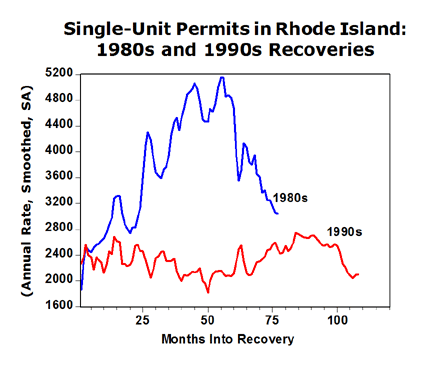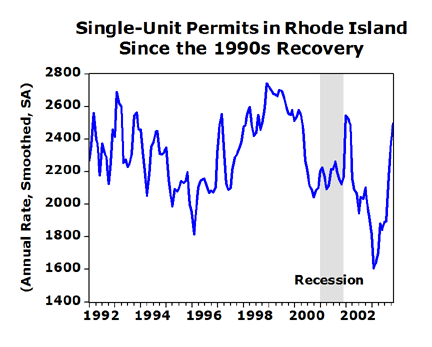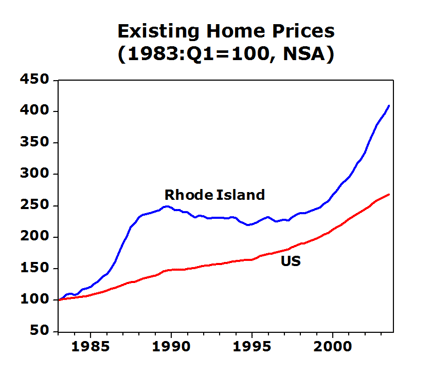|
More recently, several structural changes have begun to affect new
home construction here. Primary among these are permit restrictions,
demographic changes in our population, and the fact that fewer but
larger and more elaborate houses are being built. And, of course,
weather has always been a consideration. So, at present, changes in
new home construction are the result of the interplay of these
cyclical, structural, and weather-related factors.
An examination of new home construction data for
Rhode Island reveals several unexpected results. The chart below
contrasts new home construction during the 1980s and 1990s recoveries.
Approximately four

years (50 months) into these recoveries,
permits were falling during the 1990s to around 2,000 annual units,
while in the 1980s, they had soared to more than 5,000 annual units.
Chart 2 shows permits since the 1990s recovery. Note that new home
construction actually rose during the last recession (shaded area)!
This has raised the question of

whether new home construction is cyclical any
more. Finally, permits fell sharply during the early stages of this
recovery before returning to (ironically) recession levels.
What accounts for these observations? During
the 1980s recovery, Rhode Island was still a manufacturing-based
economy, where cyclical forces dominated and the structural factors
did not come into play. Since the 1990s, structural factors have
played a significant role, offsetting some of the cyclical momentum
experienced. Why did permits drop early in this recovery? It was due
to the weather (unfrozen ground in early 2002 but frozen ground this
year).
Did you ever wonder why it is impossible to
buy even a “fixer-upper” house in Rhode Island for less than $200,000
today? This is the result of healthy housing demand coupled with a
limited supply of housing that is a direct result of the recent low
levels of new home construction. As Chart 3 shows, existing home
prices have risen much faster here than they have nationally since the
late 1990s.

The good news, for home owners at least, is
that with such limited supply, don’t expect home prices here to drop
sharply unless demand decreases dramatically. |

